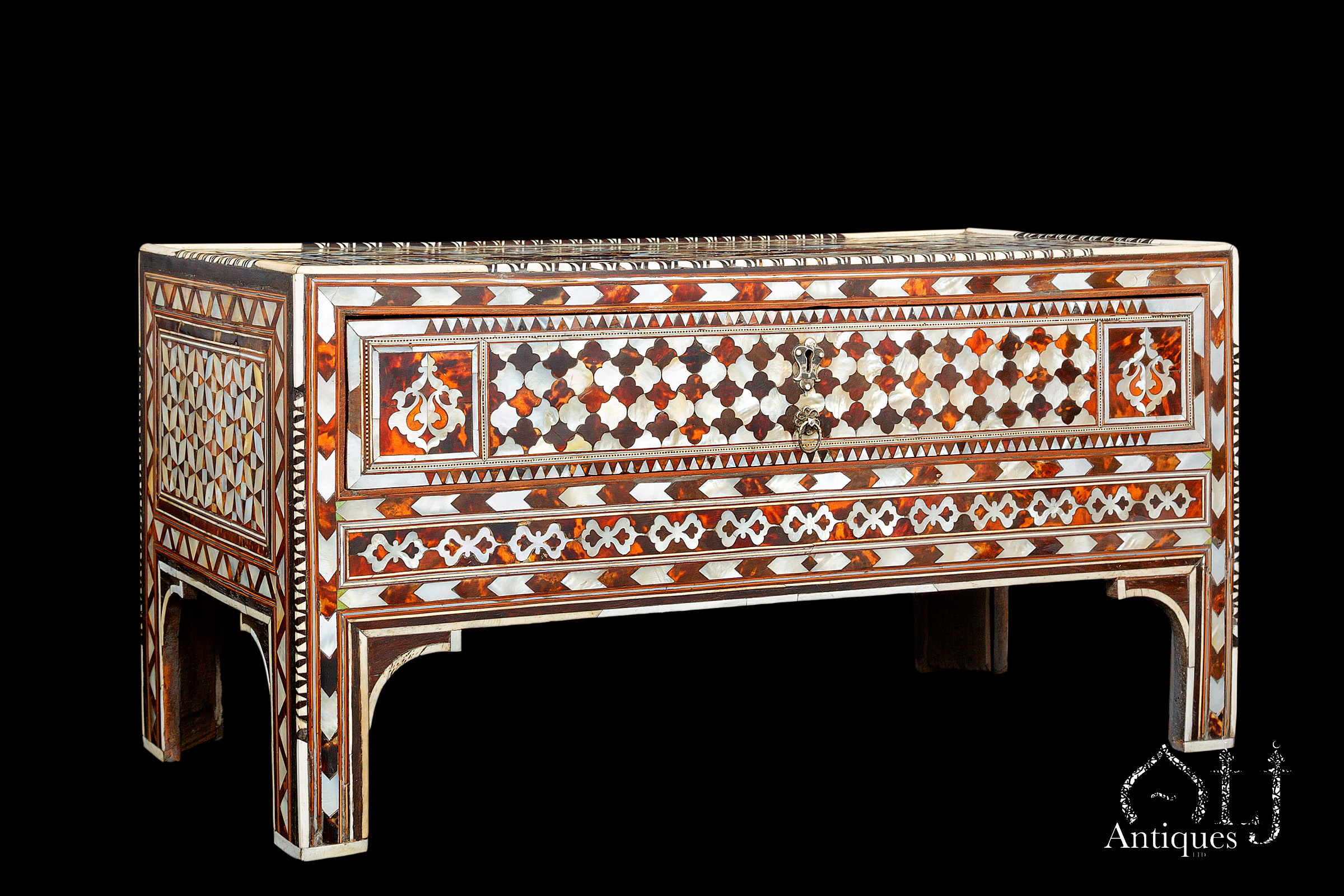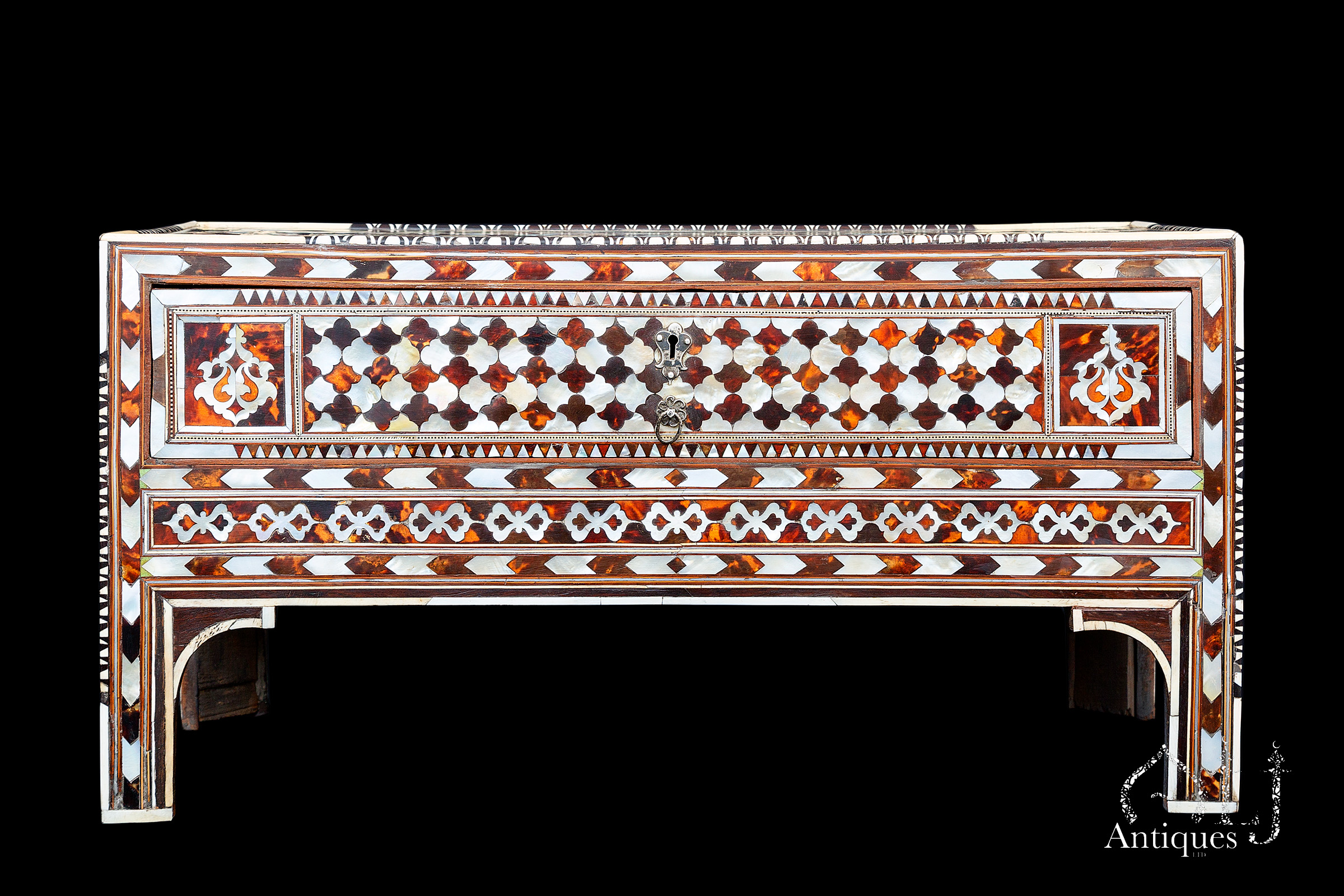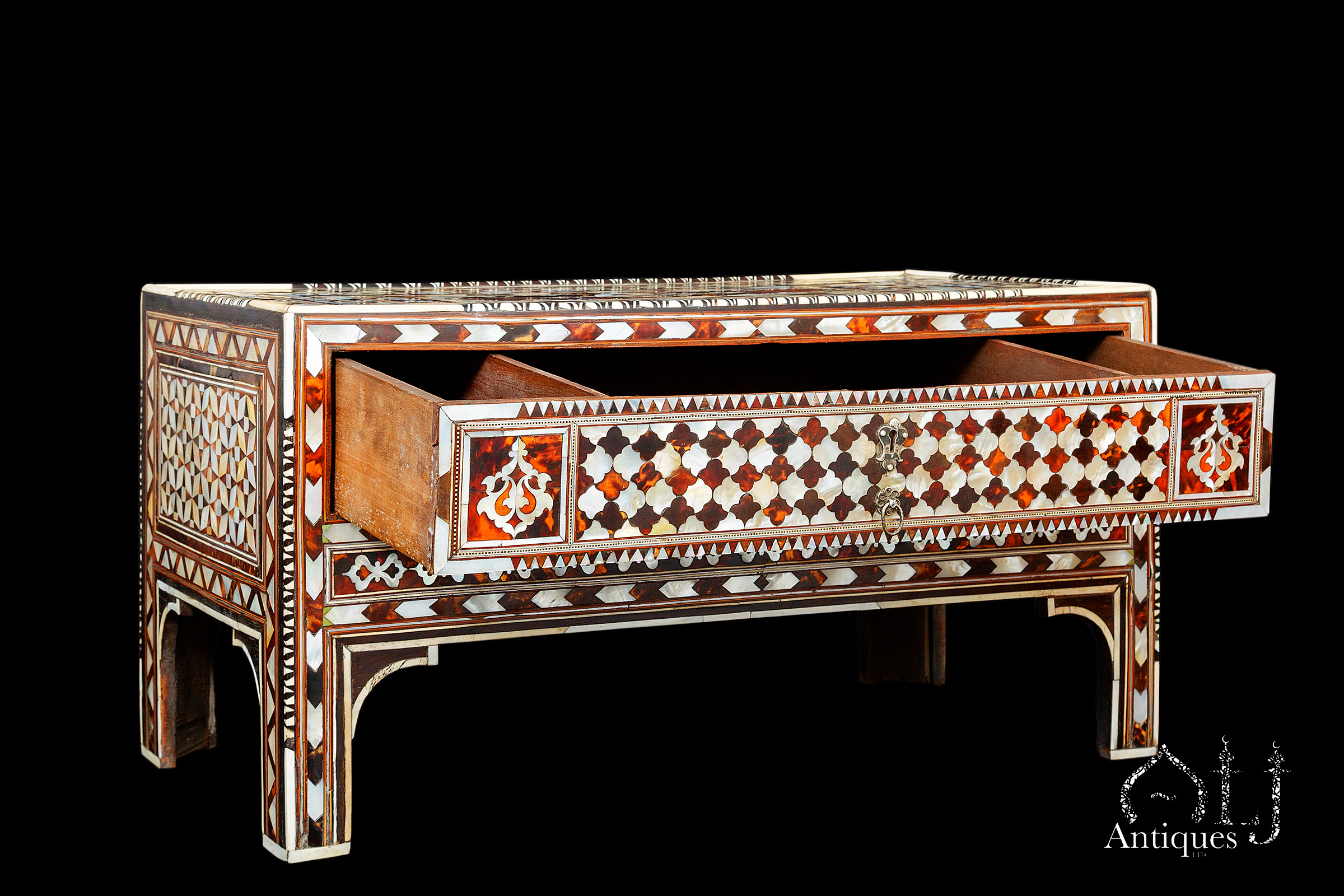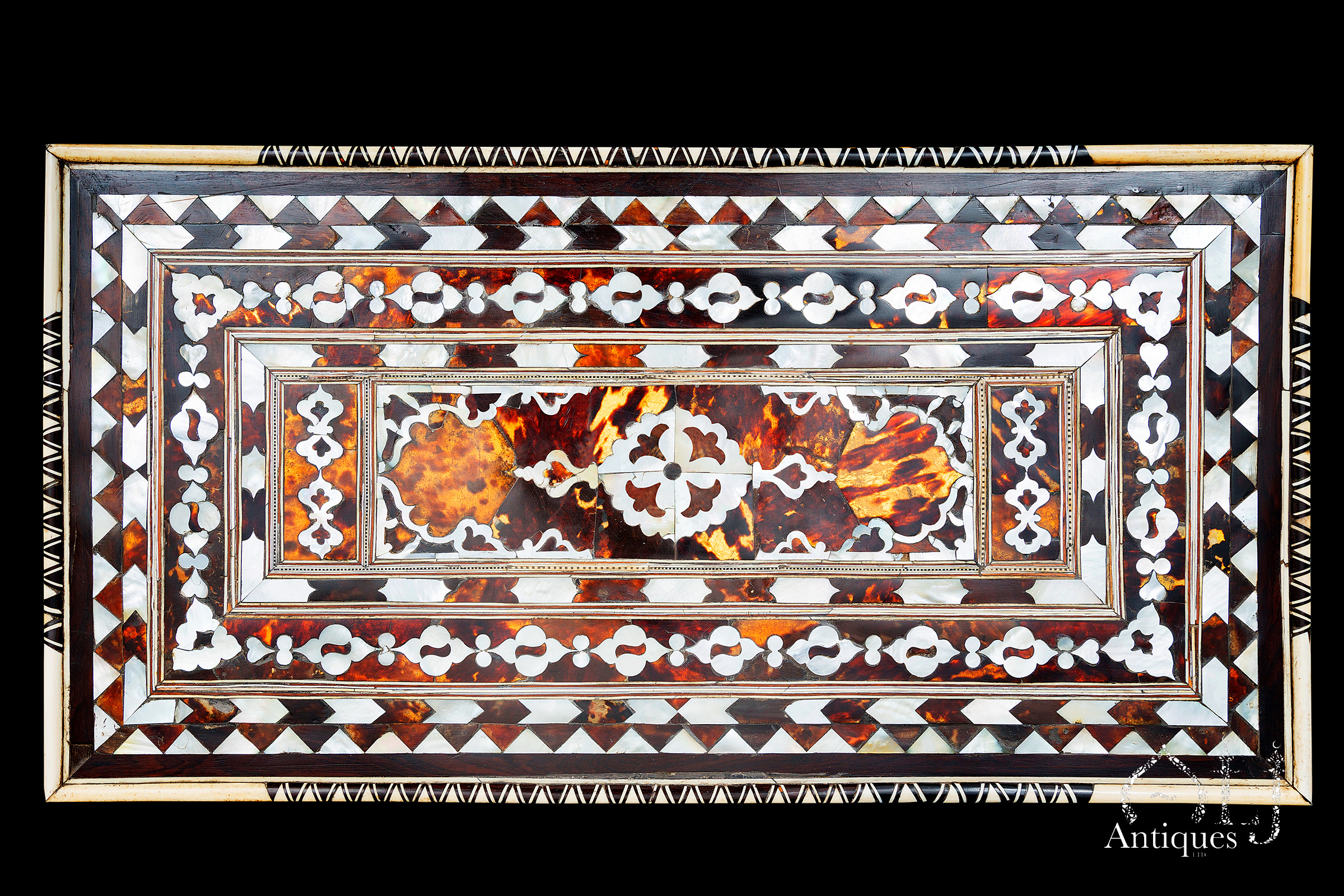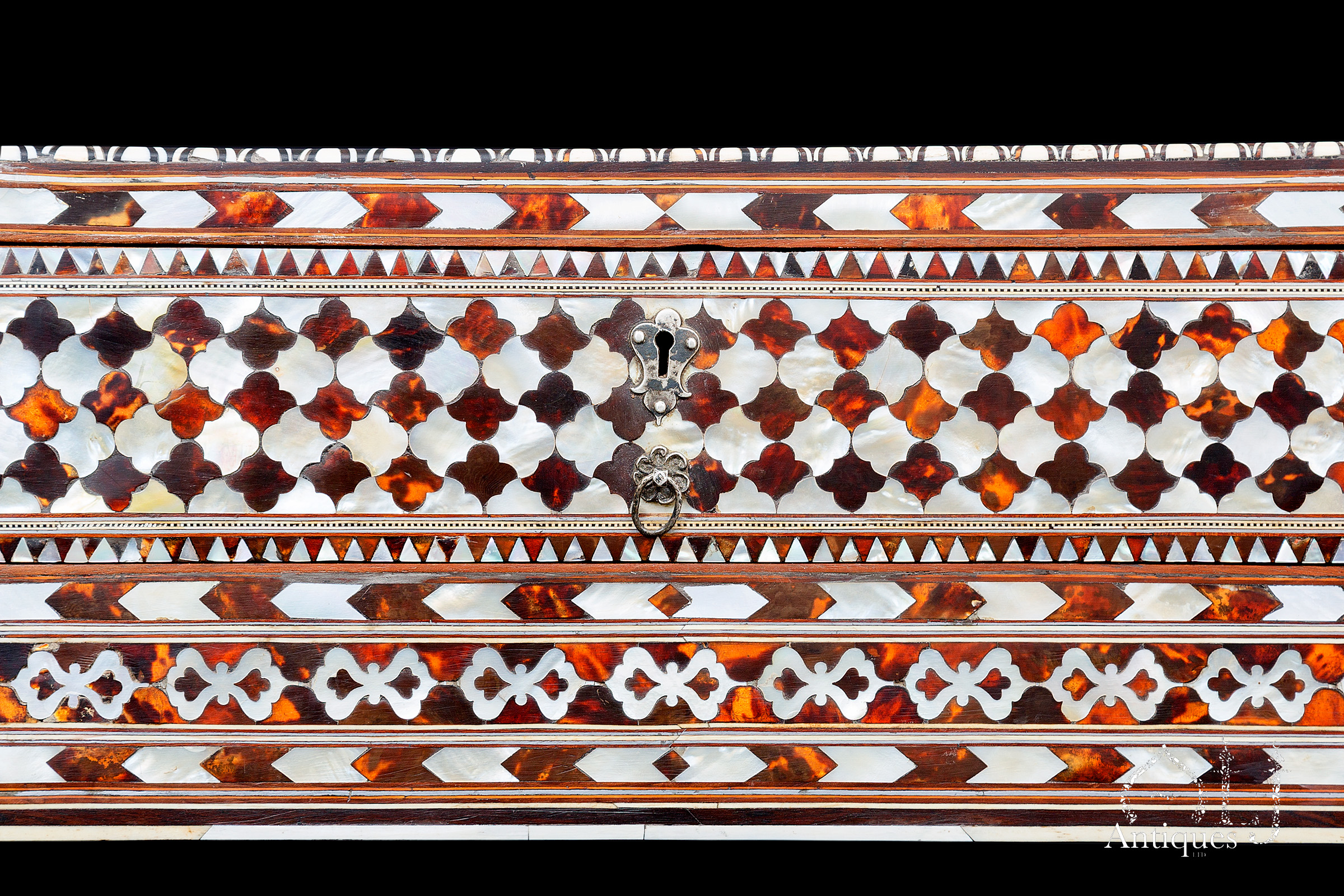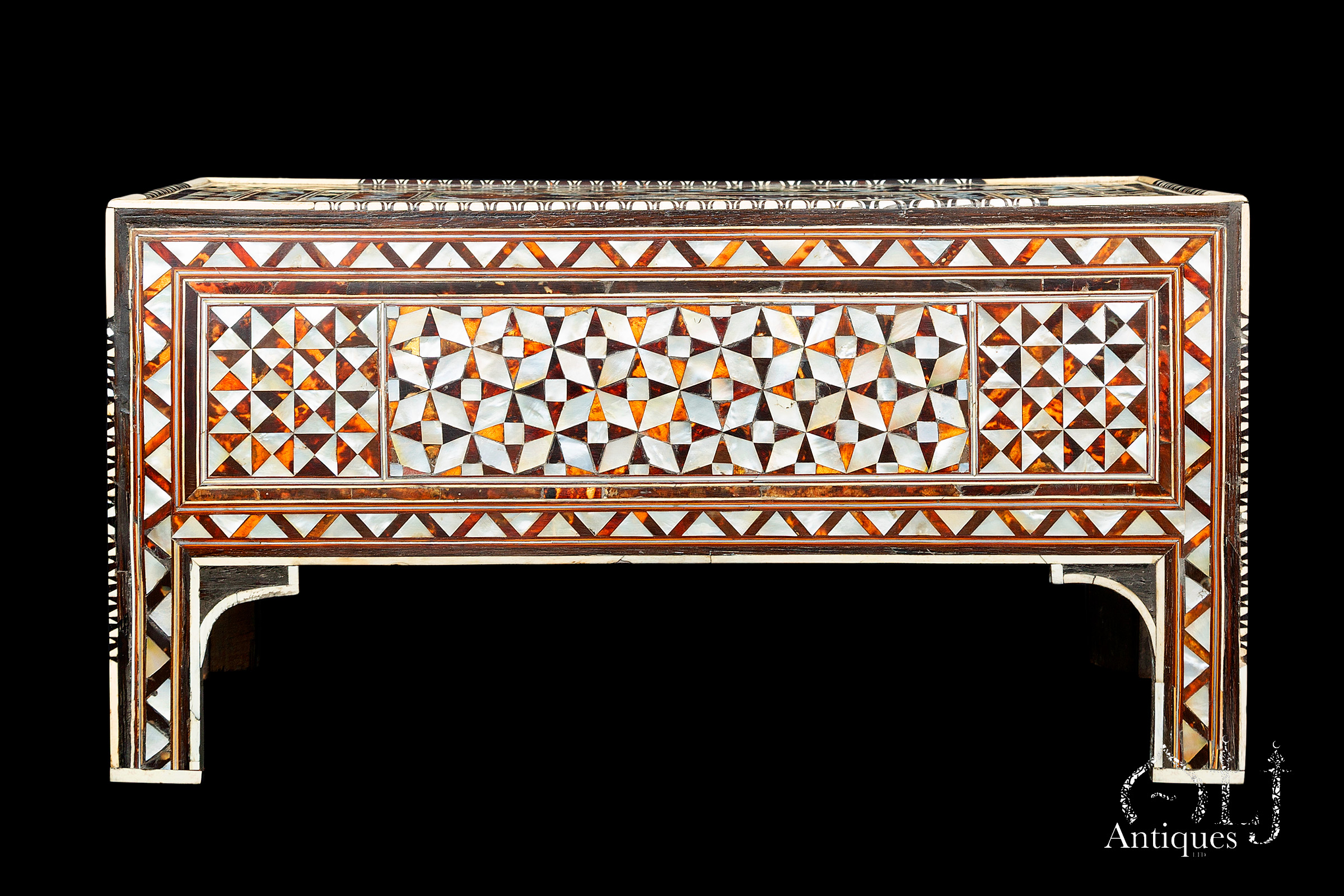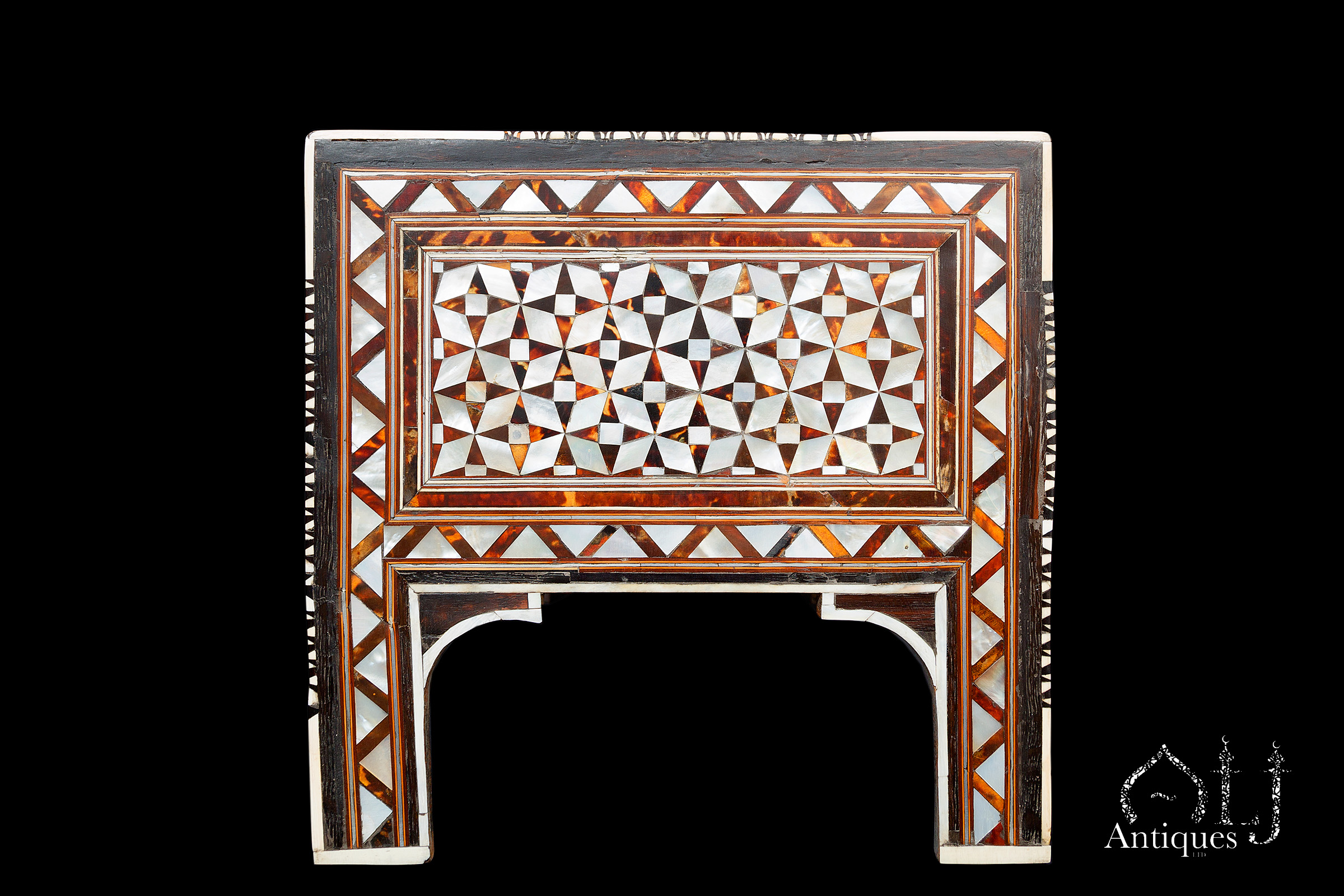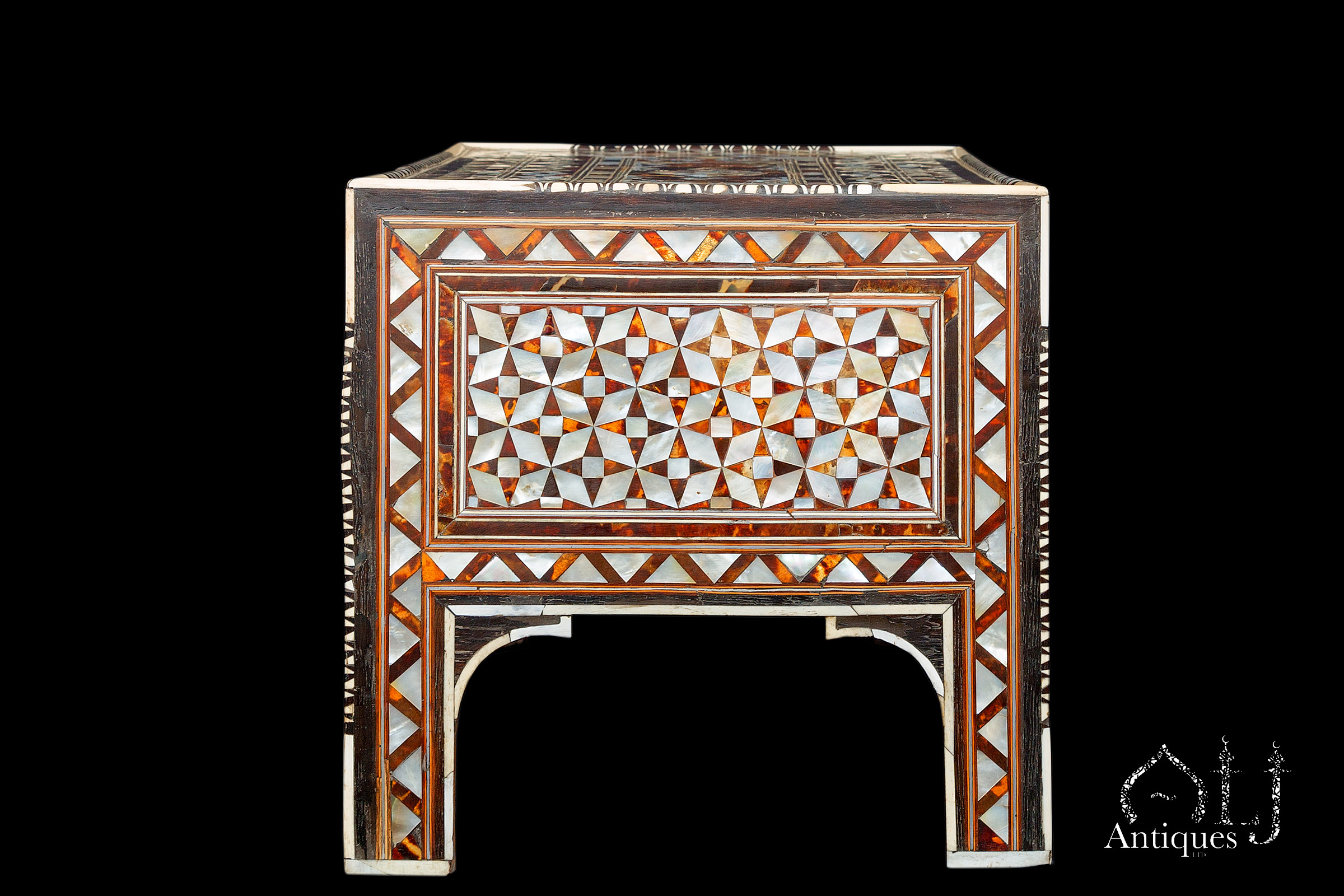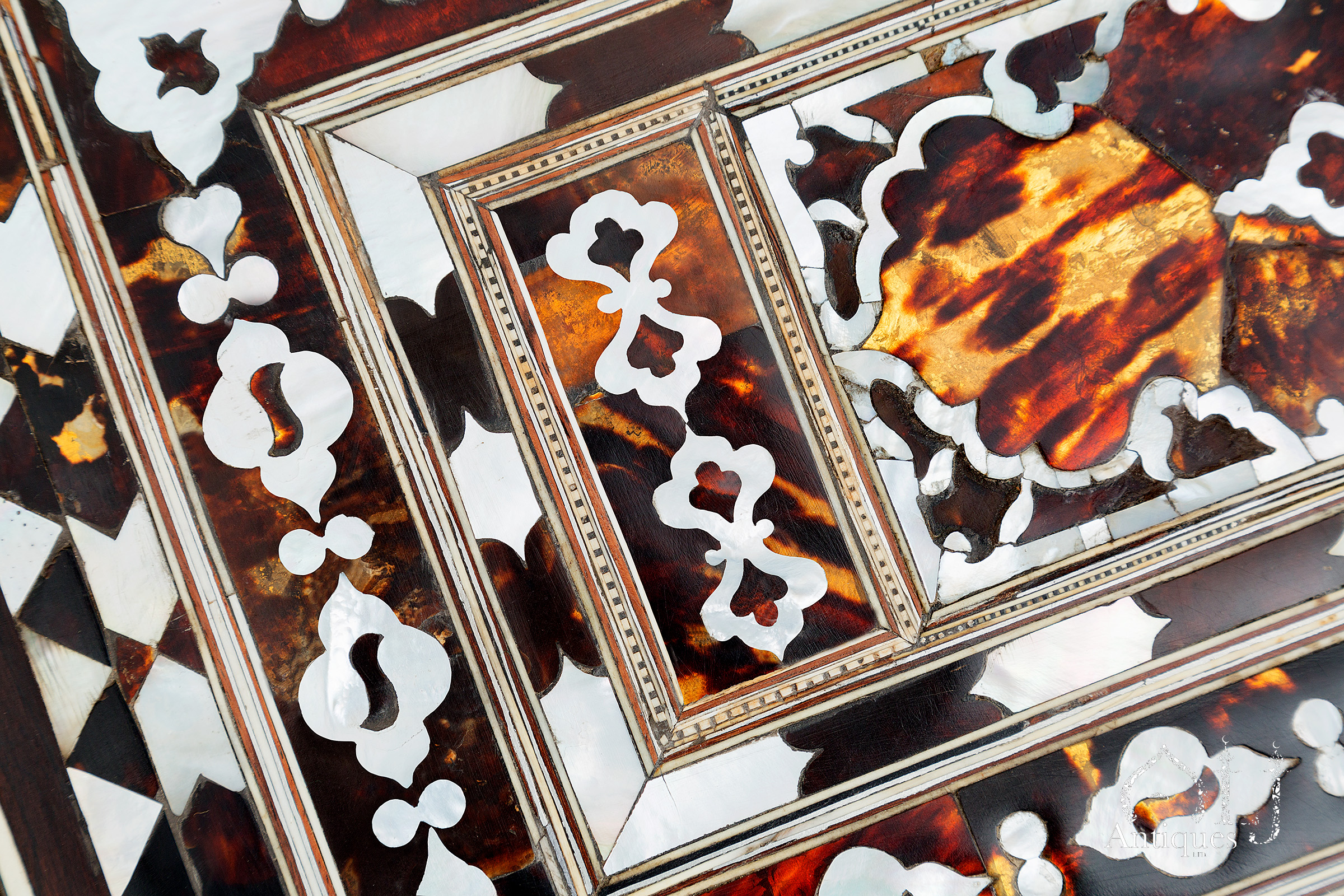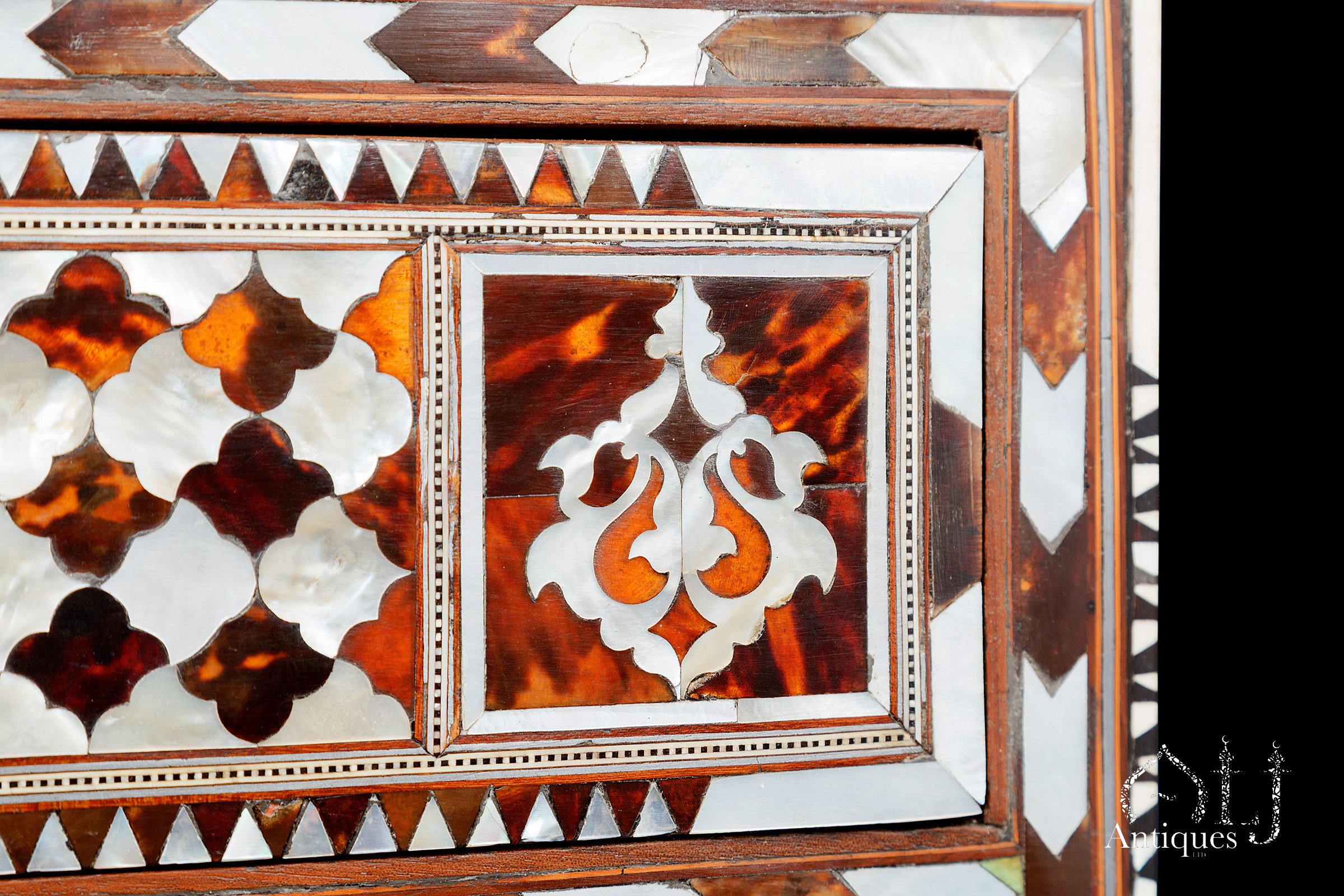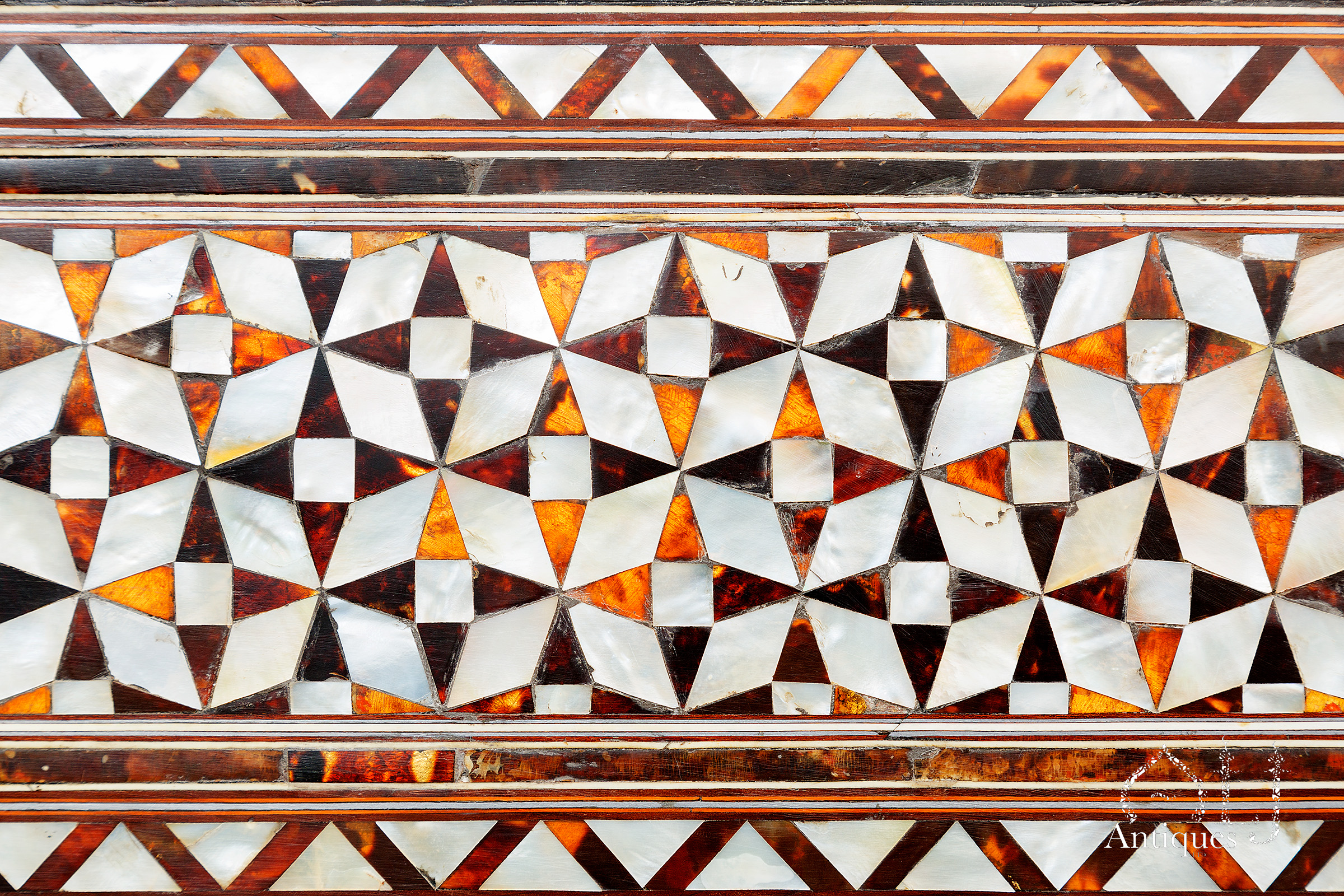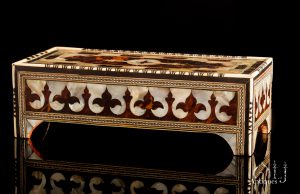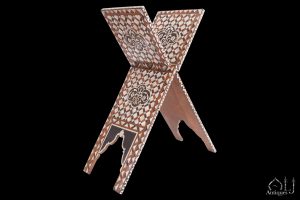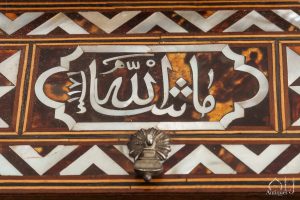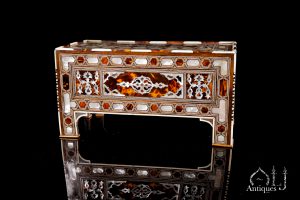Description
Calligraphy was highly valued by the Ottomans, the materials and instruments used in this art were also of great importance, such as, calligrapher boxes, scribe boxes, calligrapher’s drawer tools storage chests, Quran’s or bookrest or reading stands (Kursis-Rahle) or and calligrapher writing tables etc., these types of important Ottoman furniture were finely made with intricate and elaborate decorations meticulously carried out by fine artists whose work represented artistic expression as well as religious devotion, making these types of much valued furniture to be used in copying the holy Quran, writing important documents or creating elegant calligraphy that had a great visual appeal that added tremendous value to their work.
During and after the 14th. century, the forming, growing and the settling of the Ottoman empire and the gradual expansion in what is currently known Turkey, such as the conquest of Anatolia and the western cities and the toppling of various ruling powers such as the Byzantium empire and other Seljuk and some Mongol and Persian governing territories, the Ottomans had started to establish all aspects of the modern and civilised society, including the important aspect of Art and Architecture, therefor the ruling Ottoman elite had started forming and building their own adapted cities and putting their own finger print to Art And Architecture, although and undoubtably the Ottomans had inherited various types and styles of very valuable Arts and Architecture from other previous existing civilisations but they had made some suitable alterations to some of the major existing churches and monuments and they had adjusted them to be convenient and suitable to their own cultural and religious values and believes, therefore the ottomans had used and kept to what is considered acceptable and in addition to that they had created their own unique and specific Ottoman Islamic ornamentations to be used in Art and Architect.
During the 16th. century and after the Ottoman conquest of Egypt in 1517 AD., the Ottoman’s empire fine artisans such as the fine fabric and carpet making, metal making, carpentry and furniture making was mainly influenced by the previous Mamluk dynasty style, even the theory was that the ottoman elite had encouraged the artists to move from Egypt and Syria to come, settle and work in Turkey, for that reason the carpentry style, materials and techniques which were used during the late Mamluk dynasty had more or less stayed the same, therefore and in order to decorate fine Ottoman furniture the same Mamluk materials had also stayed the same, such as the mainly use of ebony, ivory and bone, but during the 17th century the Ottoman taste was more open to other close by civilisations and cultures such as in Persia, Eastern-Europe and India etc., which had influenced and enriched the Ottoman taste in terms of the use of various styles, techniques and other decorative materials, this had prompted the renaissance of rather a new, beautiful, specific and sophisticated Ottoman style and designs in the Art of making furniture, for the predominant Ottoman taste had shifted towards the usage of other different additional and more fashionable decorative elements and materials, like rosewood, tortoiseshell, mother of pearl, walrus Ivory, parquetry woodwork and white metal inlay techniques such as lead, those materials used were either available locally or imported, this does not mean that the Ottomans had stopped importing the other basic decorating elements such as ivory, and ebony from Egypt via Sudan.
Various designs were used in decorating various Ottoman furniture and wooden surfaces such as doors, boxes, cabinets, etc.
Sophisticated designs such as elaborate medallions, cartouches, calligraphy and beautiful floral designs were characteristic of the 16, 17 Centuries, and the beginning of the18th century whereas geometric designs were more prominent of the works of the 19th century onwards. Thus, the designs used were preliminarily complex, but became increasingly less complicated with the passage of time with a clear tendency towards geometric designs.
Also, in order to achieve a beautiful reflection of light in the transparent parts of the tortoiseshell, the backside of the finely cut pieces of tortoiseshell were either gilded or placed on glued gilded or painted paper and this was a distinguishing feature of early designs.
Due to the style and the various decorative elements used in the making of our present calligrapher’s writing desk and single drawer tools storage chest which undoubtably belongs to a similar group of other related Ottoman furniture that is related to the Art of the book or Islamic calligraphy such as scribe’s boxes etc., which were mainly made during the 17th and the early 18th century period in Turkey.
This rare and rather large wooden calligrapher’s writing desk and single drawer tools storage chest is standing on four legs, the front of the chest has only one large pulling type drawer which can be used for various needs but mainly it was made to be used for two reasons, first to use the top as a writing desk and secondly is for maintaining all the writing tools and writing papers also it can be used for keeping important readily inscribed scrolls of paper and documents.
The overall exterior wooden panels of the chest are decorated and veneered with a layer of a combination of a classical Ottoman wood work and overlaid materials.
These various overlaid materials used are mother-of-pearl, tortoiseshell, very little percentage of thin cut pieces of sliced ivory, bone and ebony, including the use of the fine micro mosaic ivory and ebony beadings which was mainly used to border the main decoration, this unique type of beaded decoration is considered as a main character of mainly the seventeenth century Ottoman wood work furniture, this can mainly be found on the top and at the drawer of our present chest.
The most visible part of the chest is the straight writing top; therefore, it had been carefully and beautifully decorated with all sorts of typical Ottoman ornamentations, floral and geometrical motifs, the central rectangular shaped medallion is decorated with a familiar but rather elaborate and sophisticated overlapping Persian style medallion which was a distinguishing feature of other Ottoman decorations such as important manuscripts, holly Qurans, Iznik pottery, etc.
For many centuries, this type of medallion was very fashionable and intricately executed in both of alternating tortoiseshell and mother of pearl.
Also, the most noticeable part of the chest is the rather unique decoration used in the central round flower shaped medallion which consist of four joint quarters of petals like motif and at the centre of each petal is decorated with lutes or an Iris style flower, similar to the well-known three petal like French flour de-Lis motif, the central flower is flanked with two beautiful palmette shaped finials and the exterior medallion ends with two parallel arched decoration, the central medallion is bordered with gradient four frames like decoration beautifully decorated with a lined of alternating finely cut pieces of tortoiseshell and mother each depicting a typical Mongol or Chinese cloud style with two dots on each side, the cloud is centred by the tiger line motif and the other frames are decorated with other diamond, chevron and geometrical cartouches.
The three inner gradient frames are separated with a group of parallel lines of ivory, bone, white metal most likely lead and rosewood.
The exterior part of the drawer is also been beautifully decorated with finely cut pieces of alternating tortoiseshell and mother of pearl depicting four parallel lines of palmettes like decoration also the two far left and right ends of the drawer are beautifully decorated with two typical Rumi style Ottoman decoration.
Also, the drawer has two mounted silver objects, the key hole is surmounted with a tulip flower shaped hanging plate also with a pulling silver ring attached with a flower shaped plague.
The overall chest borders are beautifully outlined by an alternating small and thin geometrically cut pieces of ivory, bone and ebony beadings.
(This item contains a little percentage of ivory therefore it had been registered for exemption, declaration reference No. VXXNRMQ5)

